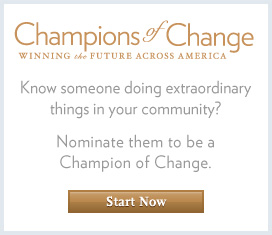Champions of Change Blog
All Hands on Deck! Innovation and Engagement in Mississippi’s Youth Preparedness through MyPI
Posted by on September 15, 2014 at 5:51 PM EDT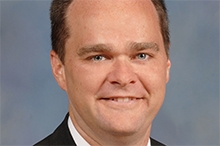
Ryan Akers is being honored as a Individual and Community Preparedness Champion of Change.
As a member of the faculty at the Mississippi State University Extension Service (MSU-ES), I am able to unite two passions of mine: emergency preparedness and the mentoring of youth. This position has provided me with abundant opportunities to enhance emergency preparedness across the state of Mississippi, addressing areas ripe for improvement and engaging individuals, families, and communities in emergency preparedness. My research background centers on college and university emergency management and the effects of trauma on college students, so I set my sights on youth preparedness research, program development, and advocacy.
The Mississippi Youth Preparedness Initiative (MyPI) is a comprehensive teen-centric preparedness program. It is different from other programs across the country because it has a curriculum, leadership and service opportunities, and career planning services, allowing for enhanced preparedness levels for approximately 25,000 families each year.
At the end of the 20th century, approximately 66.5 million children were affected annually by disasters. To prepare for natural disasters, we need a more informed population, including our youth, and a focus on roles youth can play in emergency preparedness. At MyPI, we believe that teens can play an important role in preparing our communities for disasters. In recent years, we have experienced the destructive forces of tornadoes, hurricanes, and flooding. We are keenly aware of the destructive powers of Mother Nature, but preparedness is still lacking, especially in our rural communities. The MSU-ES and Mississippi Citizen Corps created a dynamic partnership to address these shortfalls through outreach.
The DHS/FEMA-approved Teen Community Emergency Response Team (CERT) training provides us with foundational knowledge in our curriculum. One unique aspect of MyPI is the addition of CPR/AED certification, a technology track, and a career track, which allows our students to gain specialization in their area of interest. The technology track includes awareness programs for HAM radio, NOAA weather radio, smart phone apps and social media, and smoke alarms. The National Weather Service also provides extreme weather awareness programming, and Mississippi Citizen Corps provides a disaster simulation. The career track focuses on emergency management, fire service, and public safety. Individuals from each local agency explain the field, entry requirements, and answer questions. The leadership and community service capstone project, PREP + 6, is the defining piece of MyPI and allows us to reach further into communities. Throughout MyPI, every student works with their family plus six others to develop emergency supply kits and family communication plans. At the conclusion of MyPI, every participant directly enhances the individual and family preparedness of seven families in their community.
As a native Mississippian and advocate for youth preparedness, it is incumbent upon me to close gaps in preparedness across our state. Our goal is to establish a new standard for youth preparedness because that will improve the safety and security of families and communities. Together, the MSU-ES and Mississippi Citizen Corps are working aggressively to promote preparedness by empowering our teens to take a leadership role within their families and communities.
Dr. Ryan Akers is an Assistant Extension Professor with the Mississippi State University Extension Service focusing on Community Preparedness and Disaster Management. Dr. Akers also serves as the Coordinator of the Mississippi Youth Preparedness Initiative.
Learn more aboutMassachusetts Whole Community Planning and Response Efforts
Posted by on September 15, 2014 at 5:40 PM EDT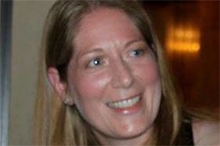
Samantha Stone is being honored as a Individual and Community Preparedness Champion of Change.
Being selected as a White House Champion of Change is an honor but not a distinction that I alone should hold. I am one person amongst a dedicated team of state government employees who are committed to promoting, protecting, and preserving the health and well-being of all people in the Commonwealth of Massachusetts, particularly those individuals and populations most vulnerable, from public health and medical emergencies, threats, and disasters.
As a member of the Office of Preparedness and Emergency Management (OPEM) at the Massachusetts Department of Public Health, I am charged with collaborating with a variety of partners and stakeholders to ensure that our public health and healthcare systems, as well as individuals and communities, have the knowledge, plans, and tools to prepare for, respond to, recover from, and mitigate the impact of these often unplanned and devastating events.
At OPEM, I oversee Show Me, a series of three communication tools meant for use by public health and emergency management personnel, volunteers, and individuals with communication challenges during a variety of emergencies. One tool is paper-based, and the other two are free mobile apps. The tools are intended for use in emergency shelters, emergency dispensing sites, and family assistance centers. At the foundation of these projects is a user-centered design: we worked closely with individuals with communication challenges so that they, as end users of the tools, became co-creators by taking part in each stage of the tools’ design, development, and creation. This is an inclusive, participatory process that focuses on users’ abilities, desires, and needs as they relate to using the final products. Instead of forcing end users to alter their behaviors to adapt to products we create, the products get created explicitly to meet the needs of end users.
Moving forward, much of our preparedness efforts will focus on developing more comprehensive, regional, and coordinated response to emergencies. OPEM is creating six regional Health and Medical Coordinating Coalitions (HMCC) within Massachusetts. As part of the establishment of HMCC, there was a year-long stakeholder engagement process that brought together representatives from acute care facilities, community health centers, emergency medical service providers, long-term care facilities, and local public health agencies. Emergency management and public safety partners are being brought into the fold as well. This shift towards HMCC embodies the core principles of whole community planning and response: coordinated and collective team efforts are best equipped to understand and meet the needs of a community.
The work that OPEM is doing on the creation of the HMCC, along with the Show Me tool set, is part of a larger departmental movement to focus on whole community and inclusive planning and response efforts as a means of engaging and empowering individuals to create a more resilient community. It’s a substantial challenge but one which we’re committed to meeting.
Samantha Stone is a Risk Communication Coordinator with the Office of Preparedness and Emergency Management at the Massachusetts Department of Public Health.
Learn more aboutInnovation Makes Our Communities Safer
Posted by on September 15, 2014 at 5:35 PM EDT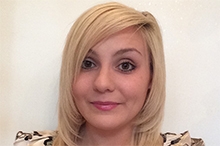
Brittany Valdez is being honored as a Individual and Community Preparedness Champion of Change.
As a Graduate Assistant at the West Virginia University Center for Excellence in Disabilities, I work with the state’s Assistive Technology program, West Virginia Assistive Technology System (WVATS), and Partnerships in Assistive TecHnologieS (PATHS). These projects are dedicated to increasing awareness about and access to assistive technology devices and services. Assistive technology is any device that can be used to perform tasks that would otherwise be difficult or impossible to perform.
The TapToTalk app was first brought to my attention while working on a project to educate public transit drivers in the state about how to assist riders who have issues with communication. To help facilitate communication between drivers and riders, I created a communication system consisting of cards with pictures that depicted common issues that arise while using the public bus system. To increase access to this system, I created an electronic format using TapToTalk, an assistive technology app for smartphones and tablets that allows users to create customized and portable augmentative communication programs by uploading photos and recording audio into specialized “albums.”
Upon completion of the communication system for public transit drivers, members of the PATHS board realized that TapToTalk could be beneficial to other service providers, especially first responders. In partnership with the Kanawha Putnam Emergency Planning Committee, PATHS initiated a project to apply the TapToTalk app to help first responders in emergency situations.
To begin, PATHS contacted representatives from the police department, fire department, and emergency medical services to determine what information is the most vital to obtain in emergency situations. We then created questions that could be answered with a simple “yes” or “no” to make the communication system accessible to those with communication issues. Next, we selected and created images to depict each question.
We created separate albums for each service provider within the app so that each album would reflect the needs of the various types of emergency responders. In addition to these specialized albums, we created a generic “Basic Info” album that can be utilized by all service providers.
After the initial completion of the app, first responders in the state were asked to identify additional languages that they felt would be useful. Based on their recommendations, each album was replicated in French, German, Japanese, Italian, and Spanish. These additional languages can be used by individuals with limited English proficiency when appropriate interpreters are unavailable.
I’ve learned the value of being innovative in preparing our communities for emergencies. We took the TapToTalk app and applied it to emergency situations, and that innovation is making our communities safer. I’m proud to have received the Champions of Change award and look forward to continuing to develop assistive technologies that help individuals communicate with first responders in crisis situations.
Brittany Valdez is a Graduate Assistant at West Virginia University. She works with the West Virginia Assistive Technology System (WVATS) and their nonprofit partner organization, Partnerships in Assistive TecHnologieS (PATHS).
Learn more aboutViewing Preparedness through a Small Lens
Posted by on September 15, 2014 at 5:32 PM EDT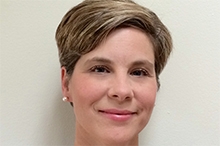
Susan Riedy is being honored as an Individual and Community Preparedness Champion of Change.
A quick web search on personal preparedness bodes over 18,000,000 results. Information is readily available to Americans who want to get prepared for any emergency. Yet, three years ago, when surveyed, only 17% of Albany County residents said they were prepared. So why aren’t more of us prepared?
Navigating through all of that information can be daunting. Finding out what is most relevant to each of us is challenging. Also, many just don’t believe a large-scale emergency will ever happen to them, but I’ve always believed that it’s better to be safe than sorry. With this in mind, Albany County Citizen’s Corp (ACCC) embarked upon a multidimensional approach to increasing individual and community preparedness. Recognizing the importance of input from the various communities that make up Albany County, ACCC reached out to service providers and communal leaders for help in developing strategies to improve preparedness. With the assistance of these dedicated individuals, ACCC increased preparedness among vulnerable populations and ensured meaningful and culturally appropriate information not only existed but was also readily available. I found that, while looking at the big picture is almost always valuable, viewing things from a smaller lens allows us to focus on the individual and unique needs of the many populations that make up our community.
I believe that successful preparedness rests on drawing upon the expertise of partners who know their communities better than we do. This was seen in the work we did with the Burmese community. A team from Albany County Department of Health and Sheriff’s Office created a preparedness presentation incorporating images and concepts that were identifiable to the Burmese population. University of Albany School of Public Health staff reviewed the presentation to ensure cultural sensitivity and to coordinate its English-Karen translation. The American Red Cross added resiliency materials. And at last, the presentation was well-received. Working together, we provided a specialized training to a vulnerable population while strengthening relationships not only with Burmese community but also with our partner organizations.
ACCC also strives to develop innovative and fun programs that call attention to National Preparedness Month (NPM). In 2013, ACCC collaborated with ShopRite to host a NPM cook-off between Albany County Executive Daniel P. McCoy and Albany County Sheriff Craig D. Apple, Sr. These celebrity chefs were each challenged to create a main dish and dessert using only non-perishable items found in their go-kits. Shoppers received family preparedness educational resources and completed a preparedness quiz for a chance to win a go-kit. Partnering with community leaders and a major grocery chain caught the attention of local media, which helped us further promote our message of preparedness to residents.
The task of preparing our communities often seems monumental. But our small lens approach has yielded a 10% increase in preparedness among our residents in the last 3 years. We hope our initiatives help foster creativity and confidence in emergency preparedness partners across the country, and help prepare our country for emergencies one person at a time.
Susan Riedy is the Senior Public Health Planner at the Albany County Department of Health. She directs the planning, implementation, and evaluation of activities associated with the Albany County Citizen Corps.
Learn more aboutChanging How People See Emergency Preparedness, With Small Steps
Posted by on September 15, 2014 at 5:25 PM EDT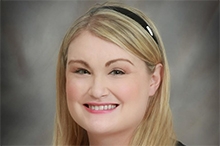
Erika Mahoney is being honored as a Individual and Community Preparedness Champion of Change.
It is an honor for me to be chosen as a White House Champion of Change, particularly since I am representing Do 1 Thing, the non-profit program that I spent my life working on. I am so proud of the work we are doing and will continue to do in the future.
I feel very strongly that as a nation we need to build resiliency, one small step at a time. In particular, we must ensure that those who live in high-risk areas, such as flood plains, or those with greater vulnerability, such as people with disabilities, are prepared ahead of time for emergencies and disasters. If we want to see the United States have a strong culture of emergency preparedness, then we need to work one community, one family, one person at a time.
Through AmeriCorps VISTA, I worked at Do 1 Thing right out of college. I was drawn to Do 1 Thing because it is built on the belief that everyone should have access to emergency preparedness information that is clear, concise, and free. People with disabilities and the elderly are among some of the very first groups I started working with, and I quickly realized that there is tremendous work to be done, particularly in those communities. I sought to create reading materials accessible to people with disabilities and the elderly. Large print, visual factsheets, braille, multiple languages, and audio are just some of the ways we have made our program accessible, but I knew that I had to stay longer to accomplish the things I wanted to accomplish. I offered to stay a second year, and during that year I was hired by the Michigan Region 1 Homeland Security Board to continue my work with Do 1 Thing.
Do 1 Thing has been an amazing and rewarding experience, and helping people prepare for emergencies and disasters has become my passion. Even as a child, I helped prepare my own family for emergencies, always asking my parents to make plans in case disaster strikes. We had sheltering plans, fire plans, emergency contacts, and meeting places. I began volunteering outside the home early on, as well. At the age of 12, I won the Youth Assistance Award for my volunteer work in my hometown of Rochester, Michigan. And at Michigan State University, I served in my dorm as the Community Service Director.
As Americans, it is important to remember to give back to the communities in which we work and live. I am proud of Do 1 Thing and of my work with the organization. While my career has been nontraditional, it has been incredibly rewarding. The Do 1 Thing program has grown from a small local organization into a national non-profit with community partners all across the country. I am so proud to be recognized as a Champion of Change, but I am even prouder that it is through the work of this fantastic program, Do 1 Thing.
Erika Mahoney is the Executive Director of Do 1 Thing, a non-profit dedicated to helping individuals, families, businesses, and communities prepare for all hazards and become disaster resilient.
Learn more aboutWatersheds and Wildfires
Posted by on September 15, 2014 at 5:20 PM EDT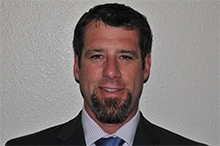
Jonathan Bruno is being honored as a Individual and Community Preparedness Champion of Change.
I grew up in a home overlooking the North Branch of the Winooski River in central Vermont. Each spring, as the winter snow melted and the temperatures climbed, my brother and I would wait anxiously for our father to announce that it was time to “move some rocks,” which to me meant swimming. As we’d splash in the clear waters, my father would spend hours clearing the boulders that had filled his swimming hole during the spring floods. As a kid, “moving rocks” was part of summer. As I grew older, I came to see dad’s underwater rock wrestling matches as a reminder that the river I loved as a boy is part of the global system that we interact with every day.
For more than a decade, I have worked in natural resource protection through the Coalition for the Upper South Platte (CUSP). With 27 staff and 6,500 annual volunteers, we work to balance the diverse needs and interests of Coloradans, serving more than 75% of our state’s residents by protecting our 2,600-square-mile watershed located in Colorado’s central Front Range. With mounting research demonstrating the global impacts of local wildfires, watershed protection demands a multimodal action approach, including fire prevention. Proper land management saves lives, money, and resources.
Two recent fires alone – Waldo Canyon in 2012 and Black Forest in 2013 – resulted in over $750 million dollars in insurance claims and greatly harmed the surrounding natural environment. These and other devastating Colorado wildfires spurred the creation of the Wildfire Insurance and Forest Health Task Force, which was designed to make recommendations aimed at lessening the impacts from fire, especially in wildland-urban interfaces (WUI), the zones of transition between unoccupied land and human development. The recommendations included an assessment of where to build and how to build so that our communities won’t be put in harm’s way. We must ensure that homeowners understand that living and building in the WUI, or deep in the forest, means that their homes could become tinderboxes when fire encroaches. While I still believe that the burden for action and property protection ultimately falls on the homeowner, the responsibility to take action falls upon everyone, and we must all be willing to take accountability and ownership over our communities.
Everyone is impacted by the way our natural resources are used, as well as how they are protected. From the river I swam in as a young boy in Vermont to the watershed I now work to enhance, protection of these resources starts with the local community. That includes property owners, local officials, land managers, and people like me who want to ensure safe and healthy communities. Wildfire issues, as well as many other environmental and societal challenges, are far too large to be solved by a single individual, office, or agency. We must be willing to accept that global problems are problems for all of us, and that solutions are possible when – and only when – we address these issues together.
Jonathan Bruno is the Chief Operating Officer for the Coalition for the Upper South Platte, a non-profit whose mission is to protect the water quality and ecologic health of the Upper South Platte Watershed.
Learn more about
- &lsaquo previous
- …
- 15
- 16
- 17
- 18
- 19
- 20
- 21
- 22
- 23
- …
- next &rsaquo

